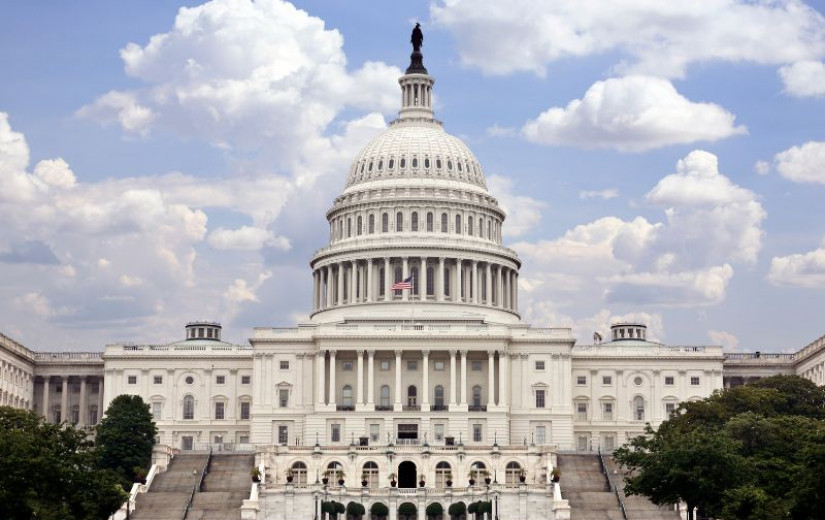
By Simon Watkins - Jun 24, 2025, 5:00 PM CDT
- Western oil majors like BP, TotalEnergies, and Halliburton are re-engaging with major projects in Iraq and Kurdistan.
- The key to Iraq’s production boost lies in the successful implementation of the Common Seawater Supply Project.
- Both the longstanding stalwart fields of Rumaila and Kirkuk require major ongoing water injection on this scale from this project.

Even before the latest potentially game-changing developments began involving its longtime financial, political, and military ally Iran, it was clear that Iraq needed to focus more on the independent development of its own resources -- most notably in energy -- for its future. In the weeks leading up to the Western-backed Israeli attacks on Iran, the U.S. removed the longstanding waivers that allowed Iraq to keep importing electricity and gas from its neighbour to power 40% of its grid and rolled out new sanctions aimed at cutting Baghdad’s support for Tehran. For years, Iraq has been talking about increasing its oil production to various figures – 6 and bit million barrels per day (bpd), 7 and a bit million, 8 and a bit million– whatever; they have all amounted to nothing. Now though, Baghdad will need to start doing something to achieve these increases. So, can it meaningfully increase its oil production, and will it do so?
Theoretically, Iraq has the natural resources to increase its oil production to way above the current average of just over 4 million bpd. Iraq officially holds 145 billion barrels of proved crude oil reserves (nearly 18% of the Middle East’s total, and the fifth biggest on the planet). Unofficially, it likely holds much more oil than this, with the Oil Ministry stating in October 2010 that its undiscovered resources amounted to around 215 billion barrels. This number had independently been arrived at back into 1997 by highly respected oil and gas firm, Petrolog. That said, the figure did not include the parts of northern Iraq in the semi-autonomous region of Kurdistan. With conservative estimates for these included, the International Energy Agency underlined that Iraq’s ultimately recoverable resources totalled about 246 billion barrels of crude and natural gas liquids. Given this, the ‘Integrated National Energy Strategy’ (INES) report of 2012 that was funded and developed by the World Bank, with further assistance from management consultancy firm then-Booz & Company, identified three realistic future oil production scenarios, as analysed in full in my latest book on the new global oil market order. These showed how the country could increase its oil output to either the ‘Low Production’ scenario of 6 million bpd by 2025, the ‘Medium Production’ scenario of 9 million bpd by 2020, or the ‘High Production’ scenario of 13 million bpd by 2017.
A combination of indolence on the part of some of those in charge of Iraq’s oil strategy and corruption from others in the corollary political apparatus meant years of little tangible progress being made on any of these scenarios. It also eventually resulted in the withdrawal of many Western firms from Iraq that could effect such significant oil output increases, as repeatedly detailed by OilPrice.com. At that point onwards, it had become increasingly clear that the intention of the Federal Government of Iraq in Baghdad (and its key backers China and Russia) was to push the West out of a unified Iraq, having subsumed the northern semi-autonomous Kurdistan region into the rest of the country. However, given this scenario, the U.S. and its allies have pushed back with the opposite agenda, as also analysed in full in my latest book. To put it plainly: the U.S. and its key allies ultimately want to the northern Kurdistan region of Iraq to terminate all links with Chinese, Russian and Iranian companies connected to the Islamic Revolutionary Guards Corps over the long term. This could then be used as a bridgehead to reassert the West’s influence in the rest of Iraq through big investment deals firstly and then related infrastructure developments. On the other side of the equation, China and Russia have long been behind the idea of rolling the Kurdistan Region into the wider Iraq and keeping the West out forever. As a senior political source in Moscow exclusively told OilPrice.com many months ago: “Iraq will be one unified country and by keeping the West out of energy deals there, the end of Western hegemony in the Middle East will become the decisive chapter in the West’s final demise.”
The West’s recent strategic push in this context has seen not just the US$25bn five-oil field development by the U.K.’s BP in the north of the country around the Kurdistan Region announced but also the US$27 billion four-pronged deal by France’s TotalEnergies in the south of the country as well. Several other deals by Western firms are in the making too, all of which are aimed at preventing the final move of Iraq into the China-Russia sphere of influence and eventually reversing it. Indeed, May 19 saw two deals signed by U.S. firms HKN Energy, and WesternZagros, to develop two fields – the Miran gas field and the Topkhana oil and gas field -- in the Kurdistan area. U.S. Energy Secretary Chris Wright made it very clear about the deeper intention behind these deals, saying that they align with the administration’s broader strategy of striking commercial deals with allies to counter Iran’s influence. By extension, given the extremely strong links between Tehran and Beijing and Moscow, this also means countering China’s and Russia’s influence across Iraq as well.
More recently in this precise regard was the announcement that the Iraqi Drilling Company (IDC) is making steady progress on its project to drill 15 oil wells in the North Rumaila oil field, alongside the U.S.’s Halliburton and the Basra Energy Company, with the latter being wholly owned by BP and also PetroChina, for the time being at least. The entire Rumaila field – split into North and South -- lies around 30 kilometres north of Iraq’s southern border with Kuwait and, together with Kirkuk, has produced around 80% cent of Iraq’s cumulative oil production to date. BP has long been in talks with Iraq’s Oil Ministry to push production up to 2.1 million bpd from the current circa-1.2 million bpd which, given the field’s estimated 17 billion barrels in proven reserves, should not be difficult. However, there is a catch – and this is that in order to achieve this step up in production substantial sustained water-injection would be needed to maintain the required pressure. Happily for the West’s plans for Iraq, this is exactly what one of TotalEnergies’ four key projects is geared to do in the shape of the Common Seawater Supply Project (CSSP). This involves taking seawater from the Persian Gulf and transporting it to oil production facilities to boost pressure at key oil reservoirs.
Both the longstanding stalwart fields of Rumaila and Kirkuk -- the former beginning production in the 1950s and the latter in the 1920s -- require major ongoing water injection on this scale from this project. Rumaila produced more than 25% of its oil in place before water injection was required because its main reservoir formation (at least its southern part) connects to a very large natural aquifer that has helped to push the oil out of the reservoir. In Kirkuk’s case, production dropped significantly after output of only around 5% of the oil in place. Most of Iraq’s oil fields fall between these two cases in terms of water injection requirements, but its other big fields -- West Qurna (1 and 2), Majnoon, and Zubair – are at the higher end. This means that for Iraq to reach any of the significant increases in oil production envisaged in the key 2012 INES report – from 6 million bpd up to 13 million bpd – Iraq’s Oil Ministry, and whichever government is in power at the time, will need the CSSP up and running and working sustainably, and this means TotalEnergies and the West. Given this confluence of geopolitical and economic imperatives, the chances of Iraq finally meaningfully increasing its oil production to a level even vaguely commensurate with its huge reserves look better than they have ever done.
By Simon Watkins for Oilprice.com
More Top Reads From Oilprice.com
- Energy and Water Scarcity: The Hidden Drivers of Global Conflict
- Key Players and Production Trends in the Steel Industry
The Strait of Hormuz: What It Is, Where It Is, and Why It Matters

Simon Watkins
Simon Watkins is a former senior FX trader and salesman, financial journalist, and best-selling author. He was Head of Forex Institutional Sales and Trading for…











